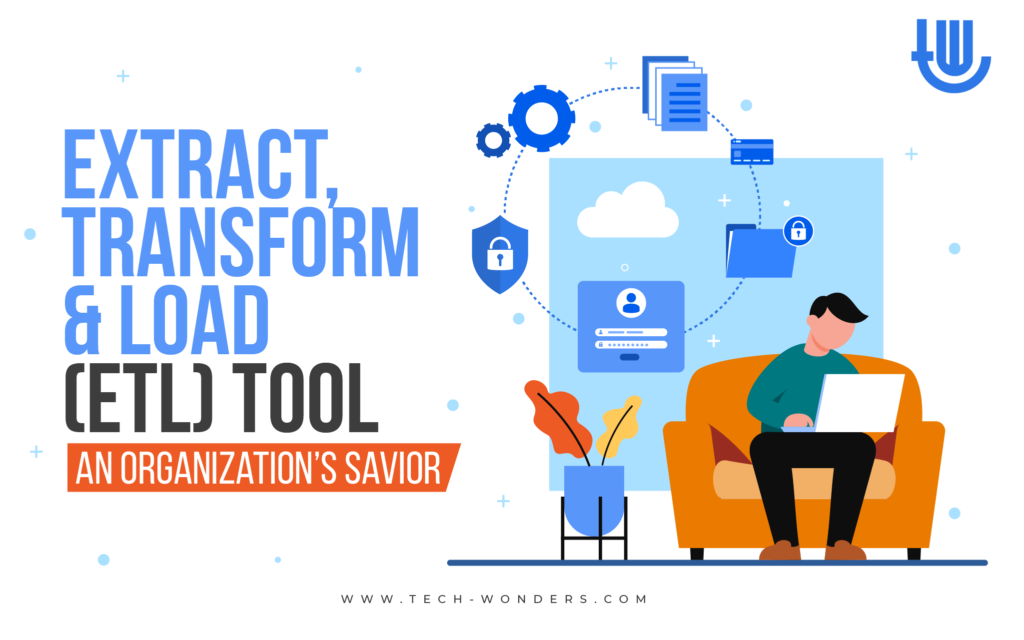
Organizations have relied on ETL processes since decades. ETL is a process that extracts, transforms, and loads data from multiple sources to a unified repository. ETL has been in use since 1970s for the purpose of computation and analysis. Gradually they became a crucial player in data warehousing processes.
Today, ETL is being used ever so widely. Around 75% of the companies have integrated ETL processes as they improve efficiency, accuracy, and consistency. ETL process forms the basis of accurate data analytics and data-driven business decisions as they allow you to make sure that your data is clean. An ETL process can be broken down into 3 steps:
Extract:
In the first step, data that is trapped in structured or unstructured data sources such as pdfs or emails, is extracted through extraction techniques. This is important because since 2000’s, pdf documents have been used extensively across organizations for data sharing. A lot of crucial information is trapped in these data structures which can’t be automatically translated into structured data. To extract this trapped data and convert into structured format, traditionally a team of employees manually go through each document, and then enter data from relevant fields, into respective columns on excel. This was obviously a very tedious and inefficient job. Nonetheless, there are extraction software that makes this process much simpler now by deploying data models and automate the process.Transform:
After extracting the unstructured data from legacy systems, the data is passed through transformations. The raw data extracted undergoes data processing through different transformation. In the process, inaccuracies or unwanted data fields are eliminated, data quality is ensured through data quality rules & audits, and any calculations that may be required are also performed. The aim is to transform the raw data into actionable data that can be used for analytics.Load:
In the last step, the transformed data is loaded into the required destination which you can use in data analytics. For most organizations, this entire process is fully automated, well-defined, and batch driven.
Typically, if this process is done manually, it takes hours. However, now there are enterprise ETL solutions that can do it all automatically for the organization. Let’s discuss these ETL tools.
ETL Tools
Initially organizations used to write their own ETL code and programs. However, with technological advancements, ETL software surfaced which companies could just buy and use. Today, these enterprise ETL solution are widely used, thanks to their extensive capabilities. Here are some capabilities that an ETL solution should have:
- High level of automation: The industry leading enterprise ETL solutions have high level of automation functionality and can automate entire workflows. From extracting data from unstructured sources, to loading data into desired location, they can automate the entire process.
- Easy to use UI: The leading ETL tools have a code-free interface where the user does not require to write any code to handle and manipulate any amounts of data. They have a drag & drop UI which makes the work simple.
- Data quality: Top ETL tools have strong data quality rules ready to be deployed to maintain data consistency and data quality. This is essential to make sure only accurate and relevant data is fed into the data analytics architecture.
Uses of ETL
ETL process is used in many use cases.
Data Warehouse:
Data warehouses are databases that store data from disparate sources, into a single location, ready to be used for analysis. Companies use ETL process to move their data into a data warehouse.Marketing Data Integration:
Marketing data integration is the process of bringing the data from disparate sources such as customer, supplier, social network, and web analytics, together at one place so that you can further analyze it. ETL process is used for it as well.Data Migration:
Data migration also involves moving the data from one location to another destination. Companies are moving their data from on-premises to cloud for multiple reasons. The ETL process is normally used for such migration projects too.
Conclusion
ETL is indeed a very crucial process for organizations as they allow organizations to speedily transform their data into actionable & analytics-ready data. Raw data is not of much value for gathering insights and hence ETL is of utmost importance for any organization now.